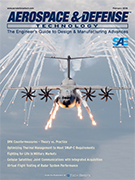Book

9th AVL International Commercial Powertrain Conference (2017)
2017-05-21
Organized in cooperation with SAE International, AVL’s International Commercial Powertrain Conference- ICPC, happens every two years. It is the premier forum for truck, agricultural and construction equipment manufacturers to discuss powertrain technology challenges and solutions across their industries. This event offers a unique opportunity for engineers to address the synergy effects and distinctive characteristics of commercial vehicles, agricultural tractors and non-road vehicles, and industrial machinery. In 2017, the 9th ICPC focused on alternative powertrain technologies and innovations improving operating efficiency. These proceedings focus on: • Future challenges for engines and emissions • Smart Technologies Changing Farming • Cyber Physical Systems in Agriculture Business • OEM View of the Future of the Construction Machinery Industry • Powertrain Developments • CO2 Reduction • CVT Transmission Platform Technology • Autonomous and Connected Trucks






